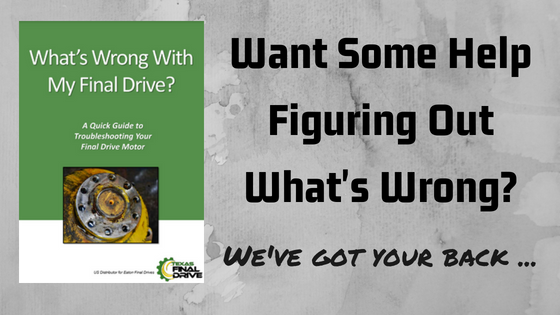Maintaining optimal hydraulic cleanliness is essential for maximizing system efficiency, minimizing wear and tear, and extending component life. Here are 20 industry best practices to keep your hydraulic systems running smoothly.
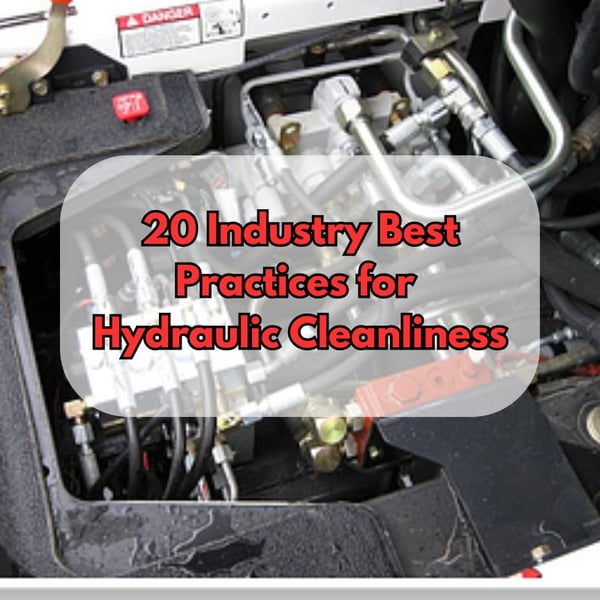
Here are a few other Shop Talk Blog posts you might find helpful:
Understanding the Importance of Hydraulic Cleanliness
Maintaining hydraulic cleanliness is crucial for hydraulic systems' efficient operation and longevity. Contaminants such as dirt, debris, and moisture can significantly impact the performance and reliability of the system. Clean hydraulic fluid helps reduce wear and tear on components, prevents clogging of valves and filters, and minimizes the risk of system failures and downtime. By understanding the importance of hydraulic cleanliness, you can take the necessary steps to maintain a clean and efficient hydraulic system.
Regular System Flushing
Periodically flush the hydraulic system to remove internal contaminants. When there has been a catastrophic failure, flushing is always recommended. Check manufacturer recommendations for when to perform scheduled flushing. The article 11 Simple Steps for Flushing a Hydraulic System from Machinery Lubrication is an excellent resource on performing a hydraulic flush.
Use the Right Filters
Install quality filters at strategic points in the system, sized and rated for the specific contaminants you expect. Remember that when some filters get clogged, the fluid flow diverts around the filter. In other situations, such as case drain filters, the pressure builds until it is released -- usually very destructive. Experts also recommend using multi-stage filtration with coarser filters followed by finer ones and breather filters on reservoirs to filter incoming air and control moisture.
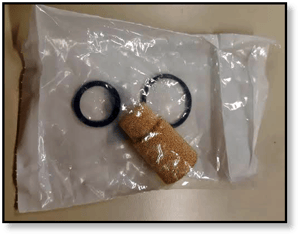
Clean Components Before Installation
Ensure all components are clean before installing them into the hydraulic system. Typical types of contamination include rag fibers, grease, sand leftover from casting, etc. Some experts recommend flushing the entire hydraulic system after installing new components.
Perform Fluid Analysis
Regularly monitor the cleanliness level of the hydraulic fluid using particle counting or other analysis methods. Experts recommend establishing target cleanliness goals based on the system's sensitivity and operating conditions, such as those suggested by ISO 4406. Also, analyze the hydraulic fluid for water content and chemical composition. Finally, track trends over time to identify and proactively address potential contamination sources.
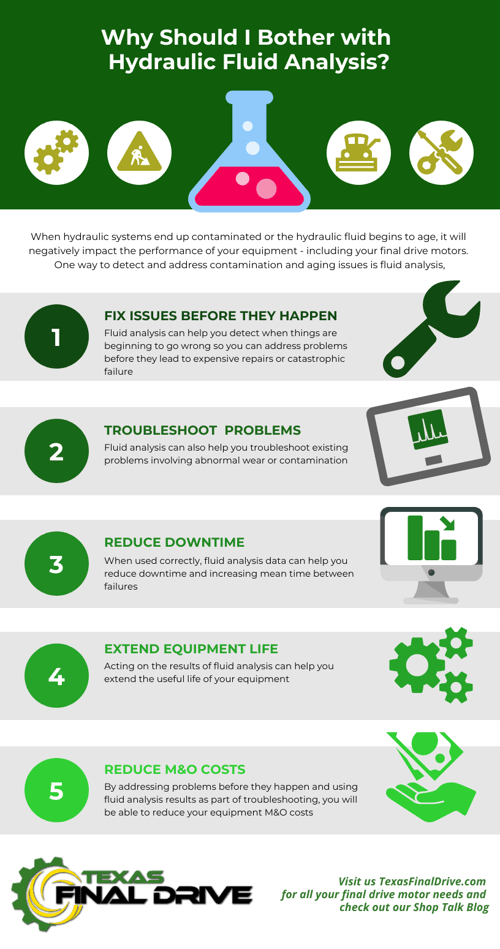
Maintain Fluid Quality
Use only clean, certified hydraulic fluid that meets the manufacturer's specifications -- and remember that even new fluid is contaminated. Implement proper storage and handling practices to prevent the introduction of contaminants into the fluid. Also, change the hydraulic fluid at recommended intervals to ensure it remains clean and effective.
Adhere to Filter Maintenance Schedules
Follow the recommended maintenance schedule for replacing or cleaning your filters to prevent them from clogging. And keep in mind that these schedules were developed to keep your machine running at peak performance, not just a way for manufacturers to make more money. Engineers specifically chose these filters' placement, type, and grade to benefit your equipment.
Perform Regular Inspections
Inspect system components for signs of wear and tear that could generate contamination, such as worn seals or damaged hoses. You can also use borescopes or other inspection tools to assess internal component conditions. Finally, schedule periodic system audits to identify and address potential cleanliness issues.
Employ Leak Prevention Strategies
Promptly repair any leaks to prevent the ingress of dirt, moisture, and other contaminants. Utilize leak detection and monitoring systems to identify and locate leaks early and implement preventative measures like proper hose selection and routing to minimize leak risk.
Train Personnel on Cleanliness Practices:
Train all hydraulic system personnel on proper cleaning, handling, and maintenance procedures. Emphasize the importance of using clean tools and equipment to avoid cross-contamination and encourage a culture of cleanliness within your organization.
Document and Review Procedures:
Document your cleaning and maintenance practices, including specific procedures for different components and fluids. Regularly review and update your documentation as needed to reflect best practices and changes in equipment or processes.
Utilize Dedicated Tools and Equipment
Always use clean containers and tools when handling hydraulic fluid to prevent contamination. Use dedicated hoses, funnels, containers, and other tools on your hydraulic systems to avoid cross-contamination. Then, properly store and maintain these tools to prevent them from becoming contaminated themselves. Keep the area around hydraulic systems clean to minimize the risk of airborne contamination.
Pay Attention to Fluid Storage
Store hydraulic fluid in a clean, dry environment to avoid contamination. Use desiccants and ensure proper hydraulic fluid storage area ventilation to reduce moisture accumulation. Don’t allow water to accumulate on top of hydraulic fluid containers; keep them in a temperature-controlled environment.
Avoid Mixing Oil
Never mix different types of hydraulic fluids: this can cause chemical reactions leading to not just chemical contamination but the formation of sludge. This will seriously impact the performance of your hydraulic equipment.
Consider Offline Filtration
Implement offline filtration systems to remove contaminants from the hydraulic fluid while the system is not in operation. Offline filtration can significantly extend the fluid's life and reduce filter maintenance requirements.
Explore Contamination Control Techniques
Utilize techniques like breather filters, magnetic separators, and electrostatic oil cleaners to minimize contamination ingress and buildup. Consider the specific operating environment and potential contaminant sources when selecting control techniques.
Seal and Cap Ports
Keep all ports sealed and capped when not in use to prevent dirt and debris from entering the system. This can be crucial when pulling or replacing final drives because of the build up of dirt and other harmful debris.
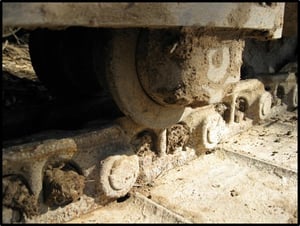
Conduct Root Cause Analysis
When contamination issues arise, perform thorough root-cause analyses to identify the source of the problem. Implement corrective actions to address the root cause and prevent future occurrences.
Stay Updated on Industry Standards
Regularly review and stay updated on the latest industry standards and best practices for hydraulic cleanliness. Adapt your program to incorporate new technologies and advancements in the field. Publications such Machinery Lubrication, Power and Motion, and For Construction Pros, as well as organizations such as NFPA are good places to start.
Leverage Digital Tools
Utilize digital tools like data management systems and online monitoring platforms to track cleanliness data, analyze trends, and optimize maintenance schedules. Data-driven insights can help you make informed decisions and improve the effectiveness of your cleanliness program.
Respond Quickly to Contamination
Quickly address any contamination issues to minimize damage to the system. Ignoring contamination will invariably lead to damage; the longer you neglect it, the more severe the damage will be.
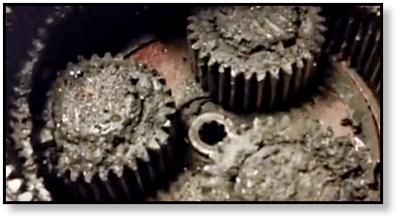
Adhere to Manufacturer Guidelines
Follow the hydraulic equipment manufacturer’s guidelines for cleanliness and maintenance. When you can’t find those guidelines, look for industry best practices. If it involves your final drive motor, contact the experts here at Texas Final Drive.

